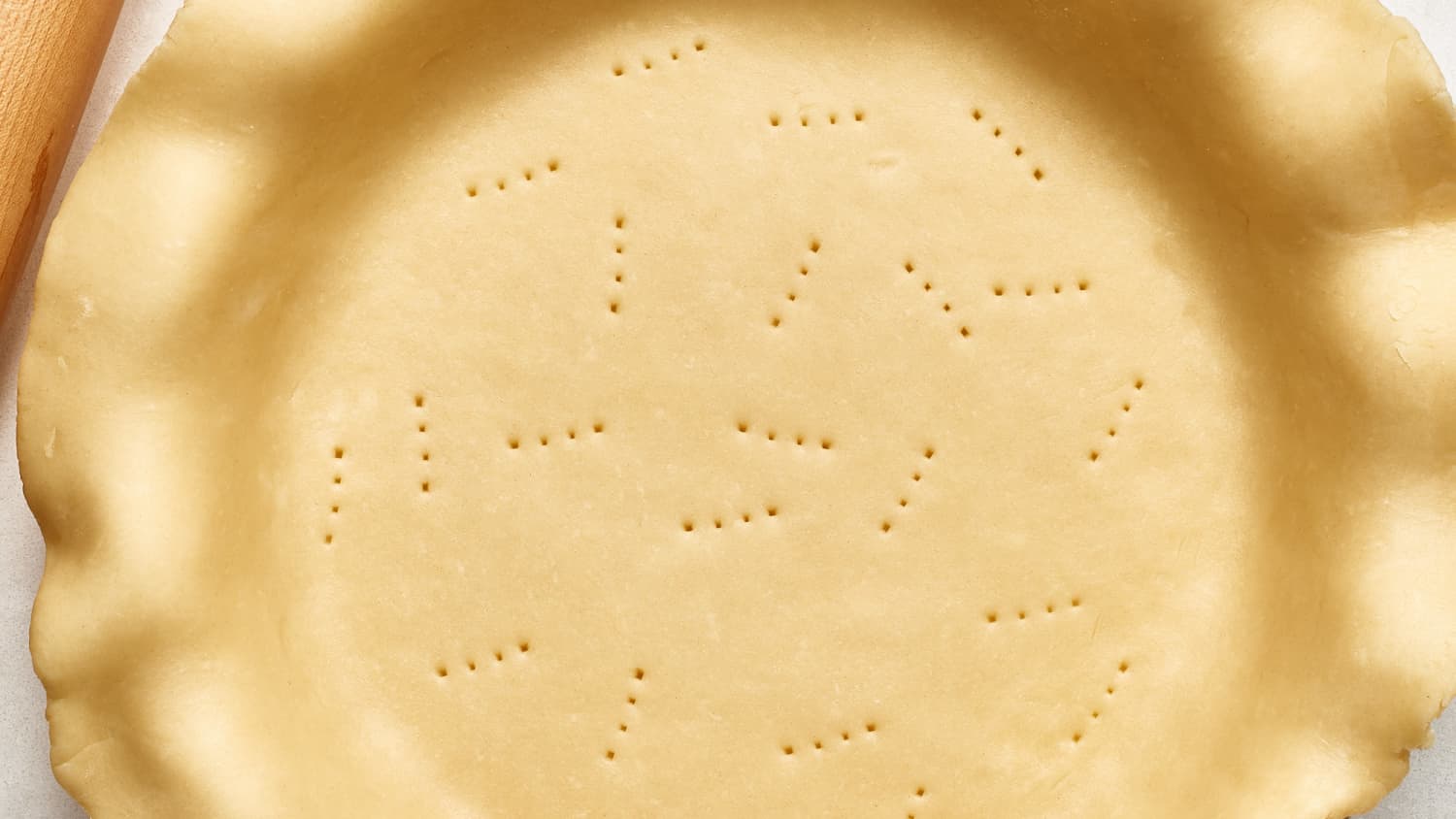How to Make Perfectly Flaky Pie Crust
4.0
(2)
Your folders
Your folders
Prep Time: 10 minutes
Servings: 6
Author : Kitchn Editors

Ingredients
Export 1 ingredients for grocery delivery
Instructions
Step 1
Prepare the butter and ice water. Cut 1 1/2 sticks cold unsalted butter into 1/2-inch cubes and refrigerate. Place a few ice cubes in a liquid measuring cup and fill with cold water.
Step 2
Method 1: Pulse the dry ingredients with half the butter in the food processor. Place 2 cups all-purpose flour, 2 teaspoons granulated sugar if desired, and 1 1/2 teaspoons kosher salt in a food processor fitted with the blade attachment. Pulse a few times to combine. Scatter half of the butter cubes over the flour. Pulse until the butter is cut into pieces no larger than a pea, about 7 (1-second) pulses.Pulse in ice water and the remaining butter. Scoop out 1 tablespoon of the ice water and drizzle over the flour mixture. Remove any ice cubes from the ice water and pour out the excess water until you have 1/3 cup left. Drizzle the 1/3 cup water over the butter-flour mixture. Scatter the remaining butter cubes over the water-flour mixture. Pulse until the dough forms very small lumps about the size of a peppercorn, 7 to 10 (1-second) pulses. At this point, the dough should hold together and feel tacky when squeezed.
Step 3
Method 2: Making dough by hand. Whisk 2 cups all-purpose flour, 2 teaspoons granulated sugar if desired, and 1 1/2 teaspoons kosher salt together in a large bowl. Scatter all the butter over the flour and toss with your hands to separate and coat the cubes. Cut the butter with a pastry cutter or two small knives into pieces no larger than a pea.Mix in ice water. Scoop out 1 tablespoon of the ice water and drizzle over the flour mixture. Remove any ice cubes from the ice water and pour out the excess water until you have 1/3 cup left. Drizzle the 1/3 cup water over the butter-flour mixture. Stir and fluff the flour mixture with a fork until the dough is evenly moistened and shaggy.
Step 4
Form the dough into disks and chill. Turn the dough out onto a clean work surface. Divide the dough into two piles (about 10 ounces each). Use the palm of your hand to quickly gather and press each mound into a thick disk about 3 1/2 inches wide. Wrap each disk in plastic wrap. Refrigerate for at least 1 hour or up to 4 days (or freeze for up to 3 months; thaw in the refrigerator overnight before using).
Step 5
Roll out the dough. Let the dough sit at room temperature for 10 minutes before rolling out. Unwrap 1 of the disks and place on a work surface dusted lightly with all-purpose flour. Sprinkle a rolling pin with flour. Working from the middle of the dough outwards, roll the dough into a 12-inch round about 1/8-inch thick. If the dough cracks when you first start rolling, let it stand for one minute to warm slightly before rolling again. Use more flour if the dough starts to stick. Use a bench scraper to lift the pastry from the work surface occasionally and make sure it's not sticking.
Step 6
Transfer the dough to a pie plate. Lay your rolling pin on one edge of the pie crust and begin gently rolling the pie crust over the rolling pin. When it's all rolled up, move it to a regular pie plate (not deep dish) and gently unroll. Ease the crust into the corners of the pan.
Step 7
Option 1: Single crust pie. Trim all but an inch of dough from around the edges. Roll the edges of the dough under itself and crimp with your fingers or the tines of a fork. The crust is now ready to be blind baked (step-by-step instructions here) or filled and baked.
Step 8
Option 2: Top or lattice crust pie. Roll out the second pie dough into an 11-inch round. Fill the pie, then top with the second crust or a lattice design (step-by-step instructions here). Press the edges together to seal, then trim all but an inch of dough from around the edges before crimping. Cut a few slits into the top of a double-crust pie for venting before baking.
Step 9
Option 3: Decorative cut outs pie. Roll out the second pie dough into a 12-inch round. Cut out shapes as desired. Fill the pie and top with the shapes. Trim all but an inch of dough from around the edges. Roll the edges of the dough under itself and crimp with your fingers or the tines of a fork.